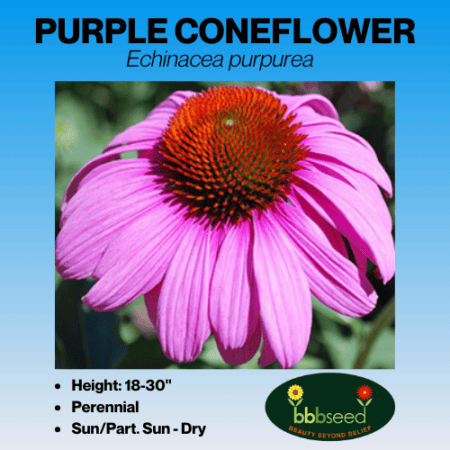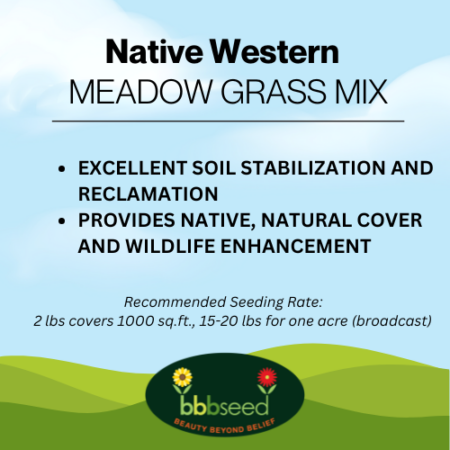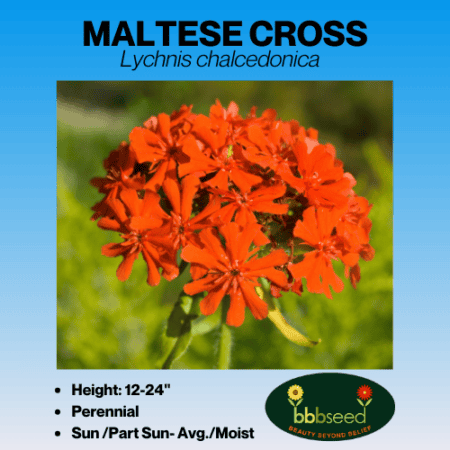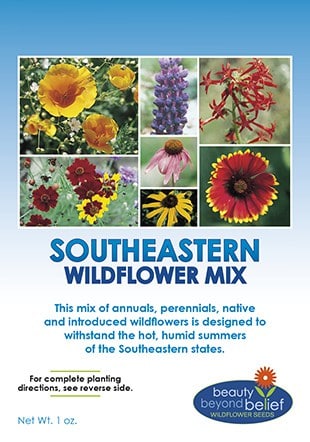Description
Southwestern Wildflower Mix
This mixture of annuals, perennials, and native and introduced wildflowers will tolerate a variety of hot and dry conditions typical of the Southwestern U.S. The annuals will bloom the first year and the perennials will become established the first year and bloom in subsequent years. Overseeding with a mixture of all annual wildflower species each year will help to re-establish the seasonal flush of color until the perennials are fully established.
In temperate climates, plant Southwestern Wildflower Mix in the fall when the soils have cooled and there is more moisture. In northern areas, plant in the early spring. Lightly rake in and cover with a thin layer of good soil or mulch to aid with water retention, no deeper than 1/8 – 1/4th inch. If irrigation is possible, soak the area once and keep moist until germination. In dry climates or in drought, up to 1/2 inch of irrigation per week may be required after germination until plants become well-established.
Here are some videos on Gardening in the SW!
Species:
Mexican Hat, Firewheel, Black-Eyed Susan, Coreopsis, Purple Coneflower, Gloriosa Daisy, Penstemon strictus, Desert Lupine, Blue Flax, Scarlet Flax, Annual Gaillardia, Firewheel, California Poppy, Desert Bluebells, Cornflower, Shirley Poppy, African Daisy, Wallflower and more.
Recommended Seeding Rates
(from lush to moderate coverage)
1 oz. 100 -150 sq ft.
4 oz. 375 – 500 sq ft.
8 oz. 750 – 1000 sq ft.
1 lb. 1,500 – 2,000 sq ft.
5 lb. 7,500 – 10,000 sq ft.
10 lb 15,000 – 25,000 sq ft.
25 lb. 1-2 acres (1 acre = 43,560 sq ft.)
General Wildflower Planting Tips
Selection:
The perfect site is sunny with good drainage and free of weeds or choking grasses. Most areas have one or maybe two of these aspects and some work will be required to get all three. In shady areas, there are specific wildflowers that will do well in partial sun/shade areas. Drainage can be achieved with some shovel work and soil amendments suggested by your local Natural Resources office or Agriculture extension office, however, to optimize your expenses and efforts now and in the future, it is very important to eliminate unwanted weeds and choking grasses that can out-compete your new wildflowers. Make sure to get the roots, too. Before planting, loosen the soil by tilling to a depth of 4″ and then rake smooth. If your site is rough and rocky, try to loosen the top layer of soil with a rake.
Site Maintenance:
After the wildflowers have germinated, it can be very difficult to distinguish young flowers from young weeds. For this reason, it is best to wait until blooms appear and then remove the unwanted weeds. This may mean waiting 8-10 weeks, so if you recognize a weed in the meantime get rid of it. Avoid fertilizing; this only encourages weed growth and will produce extensive leaf growth at the expense of blooms. Wildflowers will adjust to natural conditions and will be stronger and more drought-tolerant.
Planting Rate
A good rule of thumb is to plant 1 oz. of wildflower seed mix for 125 sq. ft. Our standard package of mixed seed is 28 grams (1 oz.) of seed. This will cover 125 sq. ft. or, roughly an area of about 12’x10′. Our 1/4lb. bag of mixed seed will cover 375 sq. ft. The 1/2lb. bag covers 750 sq. ft., and the 1 lb. bag will cover 1,500 sq. ft. These seeding rates are for our wildflower mixes only and do not apply to individual species.
Our small bags of seed (individual species) contain enough seed to cover 10 square feet or an area of about 3’x3′.
For large plots, use a maximum of 25 lbs. over one acre.
For large areas, use 1 oz. of wildflower seed for every 100 sq. ft. A good stand of wildflowers can be achieved even at the low rate of 1lb. to 4,000 sq. ft. (10 lbs. per acre).
Do not seed thicker than these rates, particularly if you are using a mixture of annuals and perennials. You will get too many annuals the first year, and they will shade out the perennials emerging underneath, which need sunlight to grow and develop
Method of Application
To add volume and help with the even distribution of the seed, you can mix clean, dry sand with the seed. Use 4 or 5 parts sand to 1 part seed. For small areas, broadcast the seeds by hand. On larger areas, use a cyclone-type spreader. Rake lightly, covering seeds to a depth of only 1/8 inch. For larger areas, the seeds can be covered by pulling a section of chain-link fence behind an ATV or small tractor.
Moisture MUST be present for germination. Plan to seed in the early spring and hope for adequate rain or wait until the late fall, just before Winter, so the seeds can lay dormant until the next spring. Planting at any other time will require you to provide supplemental irrigation. Avoid planting during the heat of the summer.
Creating a meadow effect can be achieved by mixing grass seeds with wildflowers. Use Blue gramma, Sheep fescue, or Hard fescue in equal parts with the flower seeds. These are non-competitive and serve to control erosion. Tall Fescue can be used in the southeastern states.
When to Plant
Wildflowers can be planted either in the spring, when most people are planting their garden or in the Fall when Mother Nature does her planting.
For Spring planting, gently water the area for the first month or so (unless Spring rains do it for you) to enhance germination. For Fall planting, simply rake the seed into the soil, mulch the area lightly, water once, and forget. Nature will chill the seeds and they will sprout the following Spring!
Continued Care
Once established, taking care of your wildflower garden is a must. This means you should evaluate the site once a year (usually in late summer) and determine if your expectations are being met. The first year will produce a dazzling display probably not be repeated in years to follow. The amazing flush of annuals in the mix tends to initially dominate the perennials. Most perennials do not flower the first year, instead, they expand their deep root system to ensure longevity. The perennials will expand and increase their blooms year after year!










Reviews
There are no reviews yet.